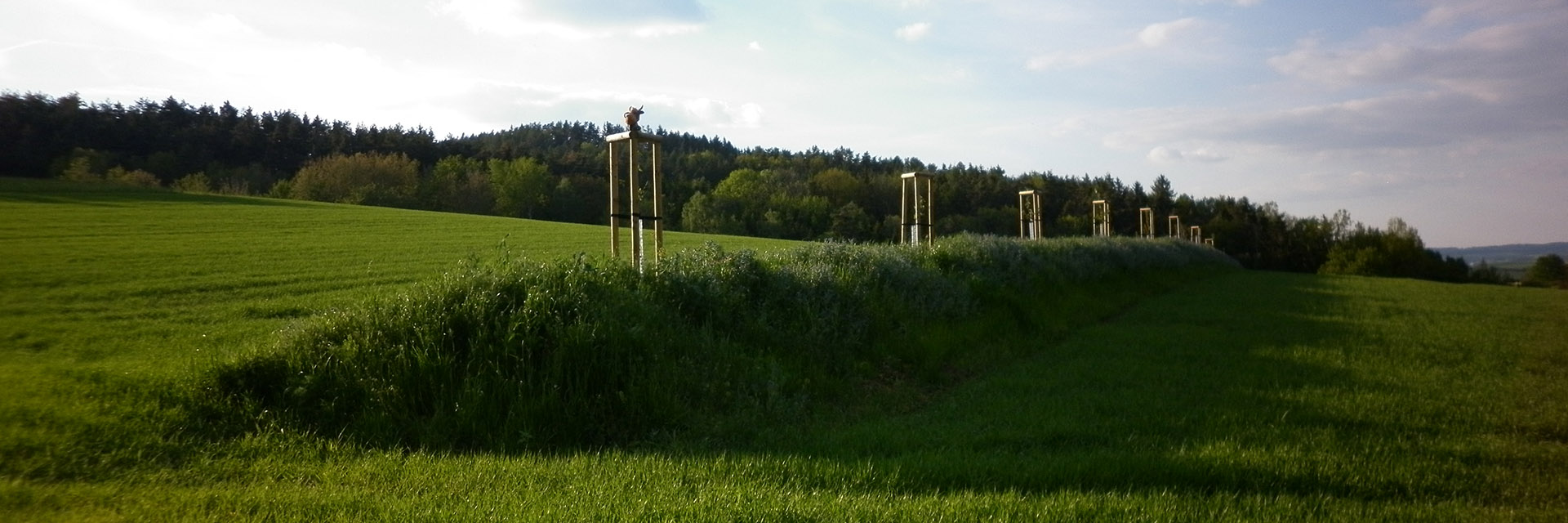Project background
Changes in the landscape water regime are closely related to changes in landscape layout. These are construction of linear elements of transport infrastructure, expansion of built-up areas, land devastation in mining areas, agricultural intensification, drainage and land reclamation, land consolidation and ploughing, deterioration of agricultural land soil structure, change of forest composition, and the application of exclusively technical approaches in the regulation of watercourses and flood protection solutions in urban areas. As a result of the above-mentioned and often insensitive interventions in the landscape water regime, and in combination with the increasing sensitivity of society (infrastructure) to various types of hazards (floods, droughts, tornadoes, etc.) and estimated manifestations of climate change consequences (affecting in particular the more frequent occurrence of hydrological drought), there are negative consequences of floods, clogging of watercourses and water reservoirs (acceleration of aging of water management infrastructure), flushing of topsoil in urban areas during flash floods, threat to lives, damage to property, etc. The consequence of the described situation (so far problematically quantified) is the reduction of fertility and yield of agricultural land (its degradation), as well as secondary manifestations of logging and traffic erosion on forest land, deterioration of the pedohydrological balance, etc.
The Czech landscape is not fully prepared for current and future fluctuations in precipitation, changes in the seasonal progression of floods, and increasingly frequent occurrence of hydrological drought. It is obvious that the implementation of part of the resulting measures in the landscape will take many years. It will be a de facto partial reconstruction of the landscape which, with regard to the optimization of the relationship between the water regime and the landscape structure, requires a comprehensive approach and the use of multi-stage optimization to design appropriate measures. Adaptation scenarios for the impacts of climate change and other factors across Europe assume timely preparation, strategic decisions on how to implement systems of preventive measures that will lead to increased water retention, and better preparation of the entire river basin district for negative impacts. Current prevention approaches are marked by a degree of fragmentation and also a low level of factual coordination in places. Landscape management systems and planning agendas, which have a major impact on landscape change and, consequently, the water regime, do not often match.
Planning agendas in the landscape are run by different entities and are usually managed for a different purpose. Ownership, which are so essential (and sometimes limiting) for the change of landscape layout, anti-erosion modifications, and proposals for common facilities, are guaranteed by the state of the real estate cadastre and the methodology and follow-up agenda of complex land adjustments according to Act No. 139/2002 Coll. Cross-border river basin district plans (or sub-basin plans), which address the requirements of the Water Framework Directive 2000/60/EC, and are now a fundamental planning tool in water management, cross the imaginary line of ownership in the landscape and the division of the landscape into cadastral registered agricultural and forest land. Another important step is the creation of territorial analytical documents according to Decree No. 500/2006 Coll. and their introduction into the spatial planning agenda of regional authorities and municipalities with extended powers. However, in summary, there are still apparent departmental barriers, lack of coordination, and low use of data connections of the above-mentioned agendas/databases and related effects from their use in spatial planning.
Landscape management systems are no less important for the regulation of the water regime. In the case of agricultural land, this is a problem of high soil compaction, lower supply of organic matter, large field area, removal of natural barriers to runoff, and above-average degree of ploughing compared to other European countries. These factors are closely related to low infiltration, rapid runoff, and the occurrence of rill, grooves and gully erosion. In the case of forest soils, the key problem is the unsuitable composition of tree species (in the case of under-represented deciduous trees, water retention is significantly higher) as well as logging and traffic erosion. The above facts indicate the motives and reasons that led to the development of the concept of a unified approach to solving the problem of runoff and erosion in the entire area of the river basin on agricultural and forest land.
Further details about the project, including outputs, can be found on a specialized website here (in Czech).
Project aims
The project had the following main aims:
- creating proposals for semi-natural anti-flood and anti-erosion measures as a basis for water planning, spatial planning, land consolidation projects, regional forest development plans, and other planning agendas,
- making proposals available to target groups of users through a map portal,
- improving existing flood protection systems and supplementing them with elements of local protection and effective measures of soil erosion protection in a river basin,
- providing new information or testing tools for responsible entities (especially watercourse managers, Ministry of the Environment, Ministry of Agriculture, Nature Conservation Agency) and applicants for financial support from grant titles focused on water management and nature and landscape protection (especially grant titles of the State Environmental Fund and the State Agricultural Intervention Fund),
- integration of the interests and certain tasks of the Ministry of Agriculture and the Ministry of the Environment into a comprehensive nationwide infrastructural project.
Project methodology
The project was divided into 14 stages:
- Analysis of the current state
- Data services and data management tools
- Definition of the target state of the area and formulation of the achievement strategy
- Proposed measures
- Evaluation of the effectiveness of the proposed measures
- Optimization I
- Making data available on the map server for revision
- Harmonization of draft measures
- Optimization II
- Final evaluation of the effectiveness of the revised measures
- Making outputs available on the map portal for output users
- Implementation of solution results into planning agendas
- Resulting data for the decision-making sphere
- Presentation and promotion


